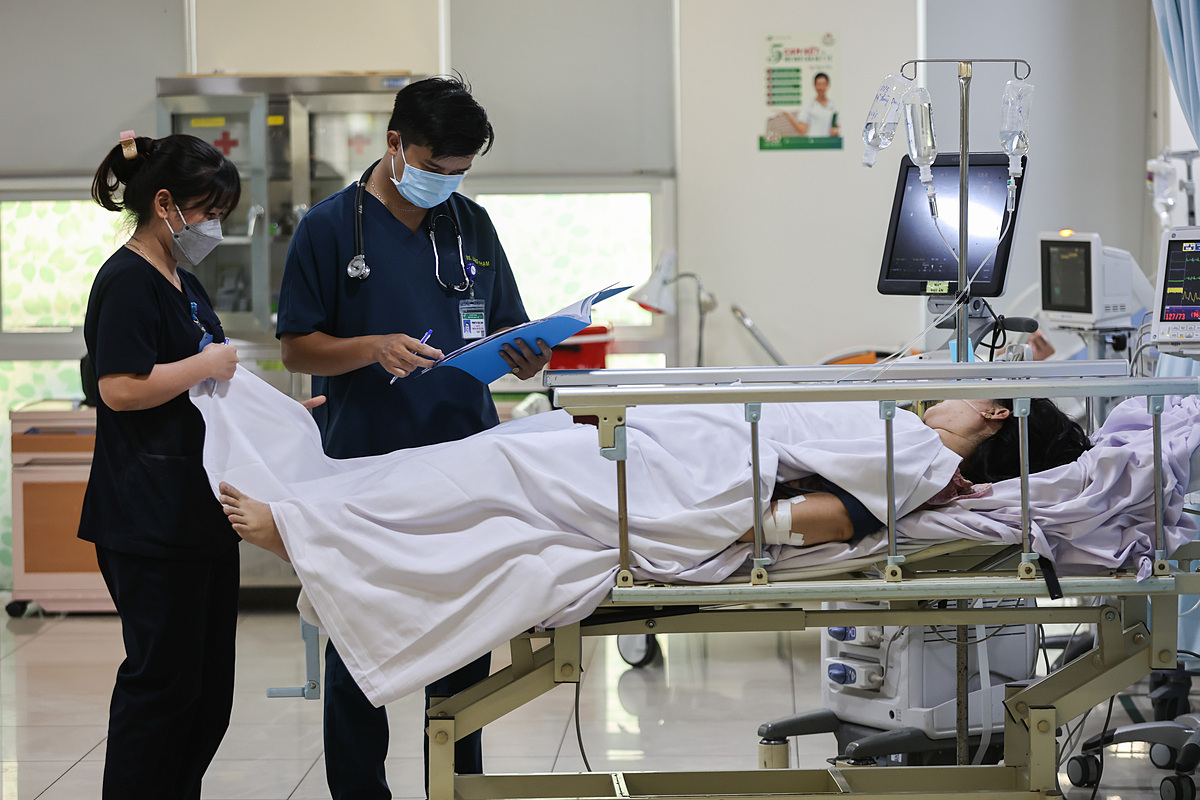Lieutenant Colonel Hoang Tien Trong Nghia, head of the Department of Neurology at the 175 Military Hospital, explains that a recurrent stroke occurs when a patient experiences a new stroke after recovering or stabilizing from a previous one. This subsequent stroke can present with similar or different symptoms compared to the first, depending on the affected brain area.
Studies show a significantly higher mortality rate after recurrent strokes compared to first-time occurrences. For example, the one-year mortality risk is approximately 25% following a recurrent stroke, compared to about 17% after an initial stroke. The level of disability is also higher in recurrent stroke patients, with most losing the ability to care for themselves. Multiple recurrent strokes, even with careful management, suggest other underlying conditions such as vasculitis, hematological disorders, or genetic factors. These conditions, though rare, can have severe consequences.
The global recurrence rate for stroke is around 10-12% in the first year and 20-26% within 5 years of the initial stroke. While specific figures for Vietnam haven't been published, multinational and regional studies show a similar rate of around 10% in the first year.
According to associate professor Nguyen Huy Thang, vice president of the Vietnam Stroke Association, the recurrence rate in Vietnam is generally higher among younger individuals under 45 due to poor treatment adherence and risk factor control, with about 15-20% experiencing recurrence within the first 3 years. The highest risk period is the first 3 months after a stroke (about 10-20% of cases) due to the unstable condition of the blood vessels.
"The risk of recurrence can be significantly reduced through treatment adherence, risk factor management, and lifestyle changes," Dr. Thang said.
 |
A patient receives emergency care at 175 Military Hospital. Photo: Quynh Tran |
A patient receives emergency care at 175 Military Hospital. Photo: Quynh Tran
The Vietnam Stroke Association leadership believes that lack of awareness or treatment abandonment is the primary reason for Vietnam's high recurrence rate. Regular check-ups and recognizing warning signs are crucial for post-stroke health management.
Dr. Nghia points out common risk factors, including uncontrollable factors like age, previous stroke history, and congenital or hereditary cardiovascular and cerebrovascular conditions. Being male and having a family history of stroke also slightly increases the risk.
Controllable risk factors include hypertension (the most common), diabetes, dyslipidemia, heart conditions like atrial fibrillation, and lifestyle factors such as smoking, alcohol consumption, high-salt diets, and lack of exercise. Non-compliance with medical advice, including insufficient medication or stopping medication without consulting a doctor, increases the risk of recurrence 3 to 5 times.
Recurrent strokes often lack clear warning signs, but some symptoms require attention. Be vigilant for sudden weakness or numbness in the arms, legs, or face, especially on one side of the body; difficulty speaking or understanding speech; sudden confusion or cognitive impairment; blurred or double vision, or loss of vision in one or both eyes; sudden dizziness, loss of balance, or clumsiness; and severe headaches with no apparent cause, different from previous headaches.
Increased weakness in previously affected areas or sudden worsening of existing symptoms could indicate a recurrent stroke. In such cases, seek immediate medical attention at a stroke-equipped hospital, remembering that "time is brain".
Le Phuong












